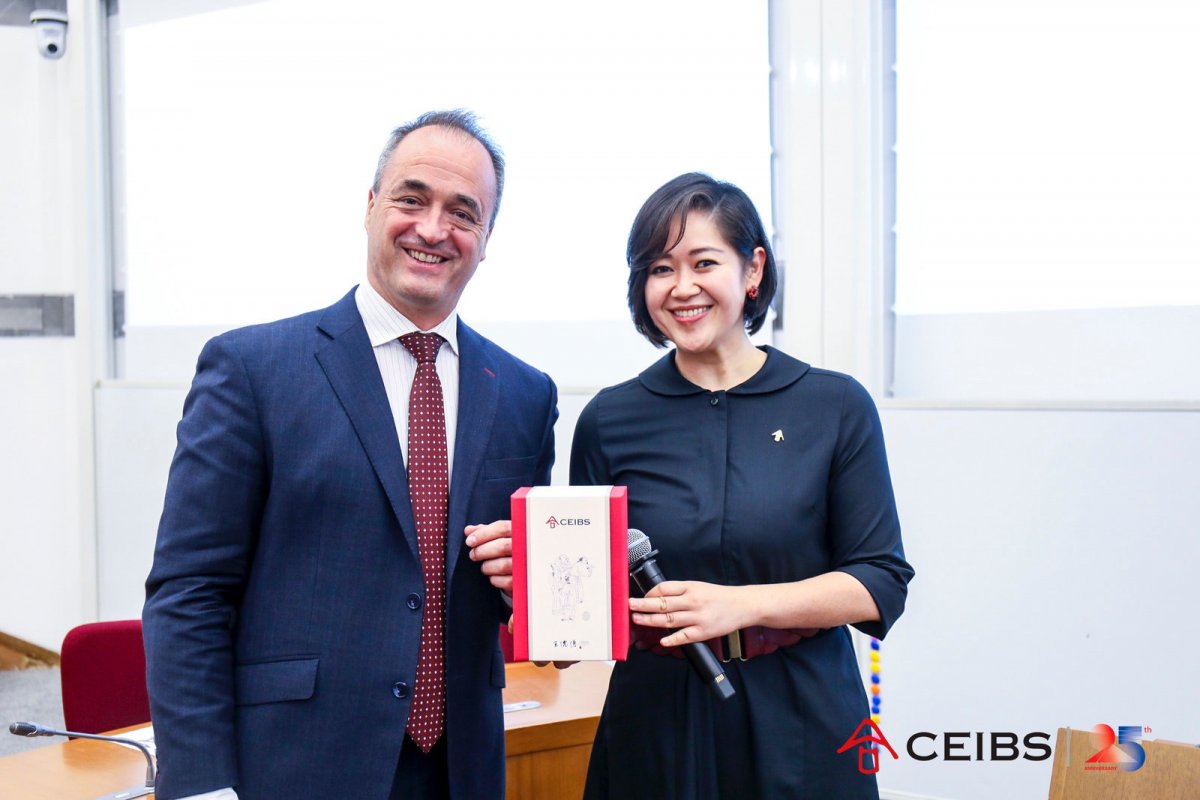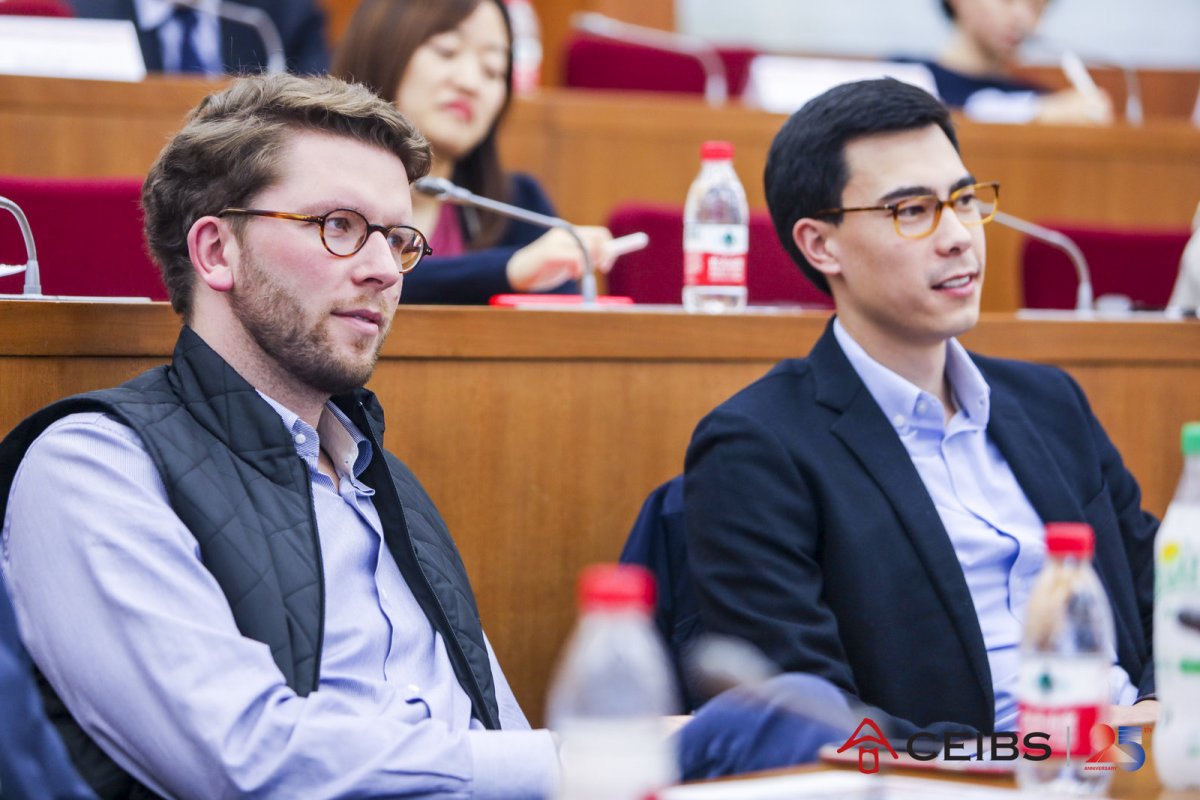CEIBS Executive Forum: Differentiation the Key to Chinese Insurance Industry Growth
November 12, 2019. Shanghai – The insurance sector in China has massive potential but must fundamentally change to develop further, according to an expert speaker at a CEIBS Executive Forum this evening.
Mr. Xavier Veyry, CEO of AXA China, delivered a speech entitled “Challenges and Opportunities – An AXA Perspective” to a bustling lecture theatre filled with CEIBS students, alumni and insurance professionals, in which he said that, despite China’s economic growth slowing, the insurance sector still has a huge amount of room to grow.
He said, “Everyone talks about the Chinese economy slowing down – that’s fine, but we’re still in the second largest economy in the world and we expect it to grow,” adding, “All in all we are no longer in double-digit growth, but if we look at Japan, it has been growing at zero percent for 20 years and it’s still the third largest economy, and for me one of the richest countries in the world.”
Mr. Veyry went on explain that the development of insurance markets is heavily dependent on rising disposable incomes and that while the Chinese economy has grown quickly and strengthened considerably, it will take time for the insurance market in China to reflect this.
“When we look at the average insurance market penetration rate (4.2%) in China it is in fact very low, below the world average,” he said, adding, “But that is normal when we look at the emergence of China and the strong economic growth it has shown over the past few years - and what this indicates is that is always a little bit of time before economic growth translates into a bigger insurance market.”
Mr. Veyry described the Chinese insurance market as a “nascent” one which had been steadily growing over the last decade but had ample room to expand further and could be understood by looking at a number of factors. He explained that car ownership had a significant impact on insurance market development - higher numbers of vehicles help diversify the market into different insurance specializations.
“When it comes to insurance, one of the most interesting factors to look at is the number of cars – on the property and casualty insurance market, the number of cars is a key driver for determining the state of the market,” he said.
Citing economic data showing Chinese consumers bought 15% fewer vehicles in 2019 compared to the previous year, he warned that despite slowing motor sales in China, the number of cars on the road still means the insurance market has huge growth potential.
“Every year there are around 23 million new vehicles sold in China – by comparison, 23 million new cars corresponds to half the total size of France’s car parks,” he said, adding, “I used to work in Spain, the total carpark size there isn’t even 23 million.”
One of the biggest areas where China could influence the global insurance market is in its rapid uptake of online payment systems.
“China is changing and a key element for us is the emergence of digital ecosystems – their development in China is second to none,” he said, adding, “There is no other country in the world which is investing and transforming its ways of interacting with customers.”
Mr. Veyry went on to say that other countries, such as South Korea, have made similarly rapid innovations, but that the vast size of China’s market means that what happens today in China in the field of online interaction with consumers, will happen at some point in the future in the rest of the world. To this end, China should be closely watched so new trends can be quickly identified, he said.
One of the biggest challenges facing the industry in China, said Mr. Veyry, is that of a lack of differentiation between various insurance products.
“There is a customer satisfaction problem and the number of complaints in life insurance is exploding,” he said, adding, “Why? Because agents are pushing products to customers. We’re in a push market, but that push is creating a lot of issues through mis-selling and a misunderstanding of products and there is a lot of dissatisfaction.”
Mr. Veyry continued, “The big challenge is how to turn this market from one based on a push model to a pull model, whereby at some stage the customer will be able to choose what exactly to be insured for and insured by.”
He also said that customers need to be offered “different sorts of products with different qualities and added values which correspondent to their own needs, because today this is not the case.”
Furthermore, he explained the problem is compounded in China by the unusual nature of insurance – that is, consumers hope never to have to use the product which they have paid for.
“In the insurance industry, we have very limited touchpoints with customers – we hardly ever see them and when we interact with our customers it’s for the wrong reasons,” Mr. Veyry said, adding that, for example, “A life insurance customer only dies once.”
This fact makes it hard to generate customer loyalty or more value for customers – two elements essential for developing any insurance market, Mr. Veyry pointed out.
“It’s hard to do much if you don't talk to customers,” he said, adding, “This is especially the case in a country like China where today most of the products are the same and we just push products to customers.”
A push for greater specialisation of particular insurance products to further develop the market will result in customers approaching insurance firms demanding policies which suit their needs, he concluded.
For details on other upcoming CEIBS events, please click here.






















